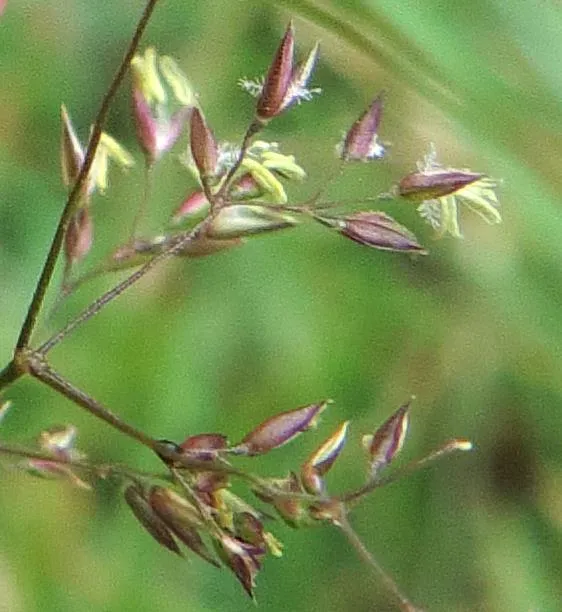
Two summer grasses
In early January and throughout most of the month, the little grass known as Brown Top, Agrostis capillaris, has been flowering. It, like many other species, is not one I have particularly noticed amongst the sward at any other time.
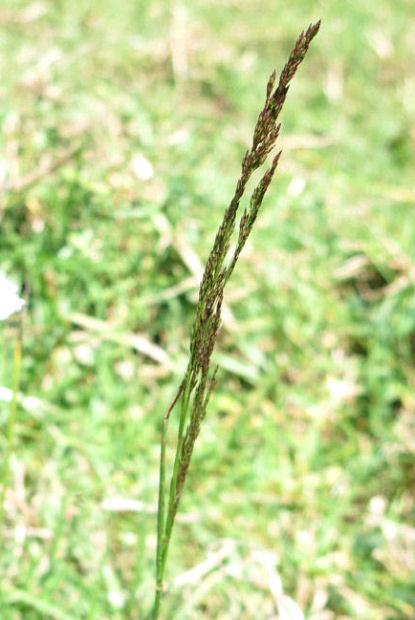
The flowers came up as dark brown spikes, noticeable amongst the other grasses and then opened out into the pretty, dainty flower panicles, which are less obvious when walking but create a brown haze across paddocks where it is present.
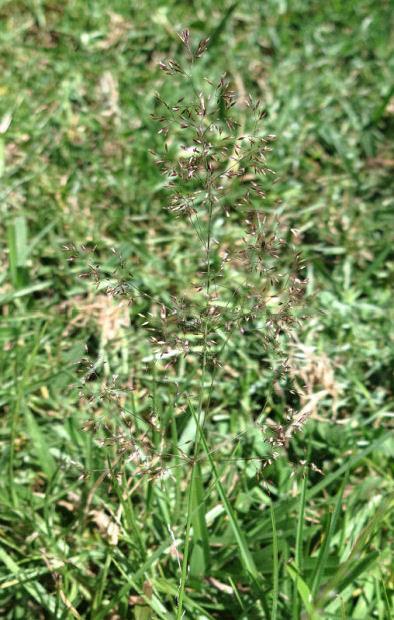
Close-up they're as fascinating as all of the grass flowers.

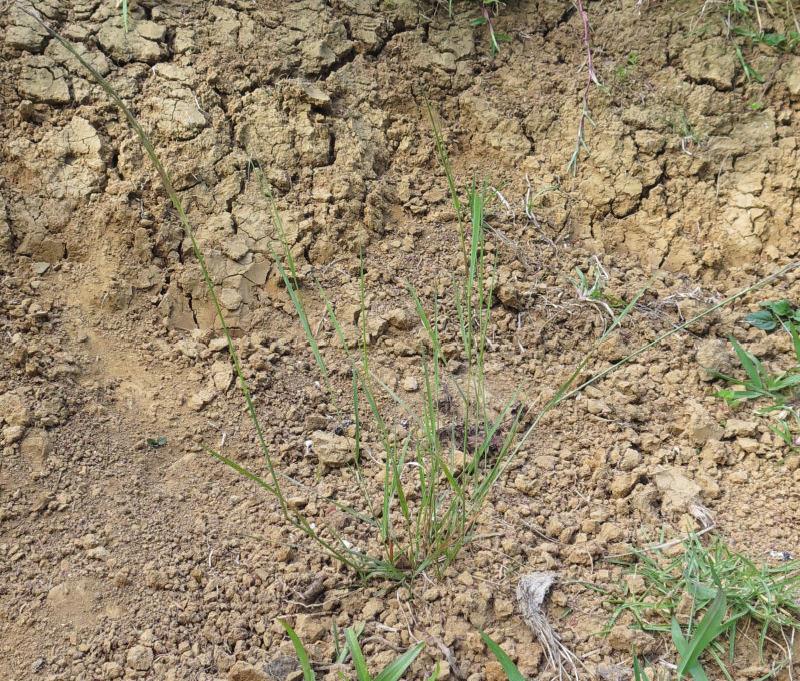
Browntop is present in most older and hill-country pastures, having been included in pasture seed mixes in the past. While it is not as productive as some of the high-fertility grasses, Browntop keeps on slowly growing in drier conditions, lower fertility soils and on steeper slopes, providing good quality forage for stock.
While I thought summer would be a good time to identify many of the pasture plants my animals are eating, it is the presence of the things I know or suspect we don't want here that I have found even more interesting. There are several of those, unfortunately, but a few I've discovered aren't as bad as I thought.
Every summer, as we're climbing around our hills carrying out weed control or checking on the animals, we have to repeatedly sit down and remove our socks, to extract the sharp, pointed seeds of something we've long called Barley Grass, but is not. The seeds catch onto clothing as we walk through the plants, or drop into our boots. With movement they then work their way in through socks until their sharp ends meet our flesh, a most uncomfortable experience when walking! Removing them requires pulling them through in the direction they've travelled; they can't be pulled out backwards without pulling the threads of the fabric they're caught in. I had worried about this apparently invasive plant spreading around more of the farm, until finally identifying it as the native Microlaena stipoides or Weeping Grass.
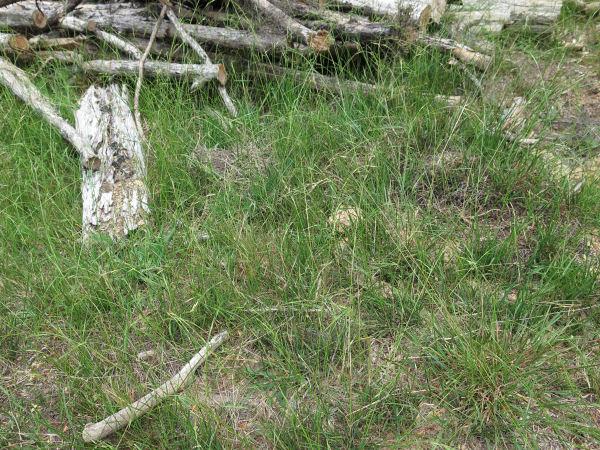
I knew we'd never be able to control it, because it grows all over our low-fertility hilly areas, particularly in the places the proliferating Kanuka has recolonised the hillsides, where it tolerates shadier conditions. To find that I don't need to control nor worry about it is a great relief. Now I can enjoy its attractiveness, despite knowing how much discomfort it will continue to cause over the next few months.
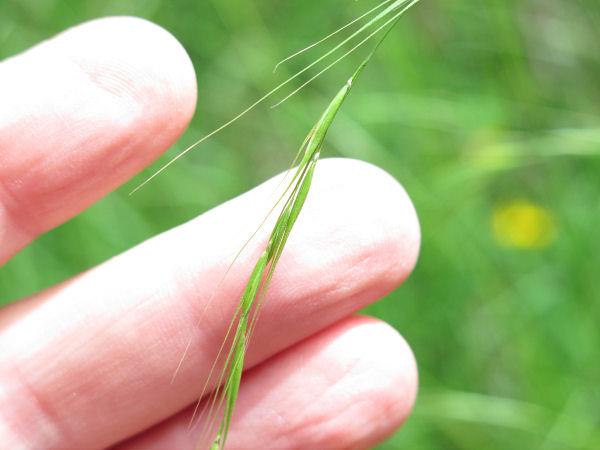
It is a pretty plant in the summer, before the seeds ripen. The flower and seed heads are carried on fine, long stems, which all droop together in whichever direction the wind has left them. Fortunately they don't appear to like open pasture land in fertile areas or they'd definitely be there too: I must have left many seeds on our flat paddocks over the years, as I pulled them out of my socks and dropped them without much thought.
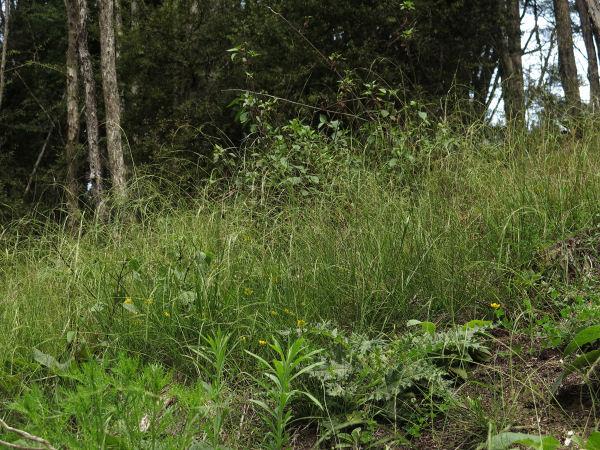
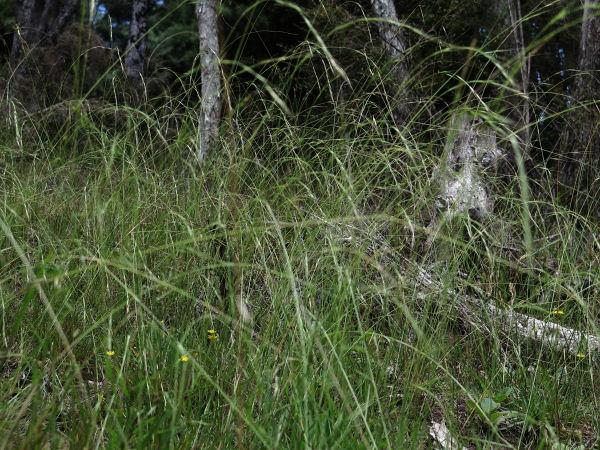
Presumably the seeds would cause problems if sheep grazed these areas but cattle do not appear bothered by them, their smooth coats providing no purchase for the seeds, although I suspect the occasional eye problem may be caused by a seed in the wrong place.
This grass is apparently highly nutritious and digestible, so not only do we not need to worry about its presence, we can welcome it. With its preference for acid soils, it grows in places few other acceptable grass species will tolerate.

